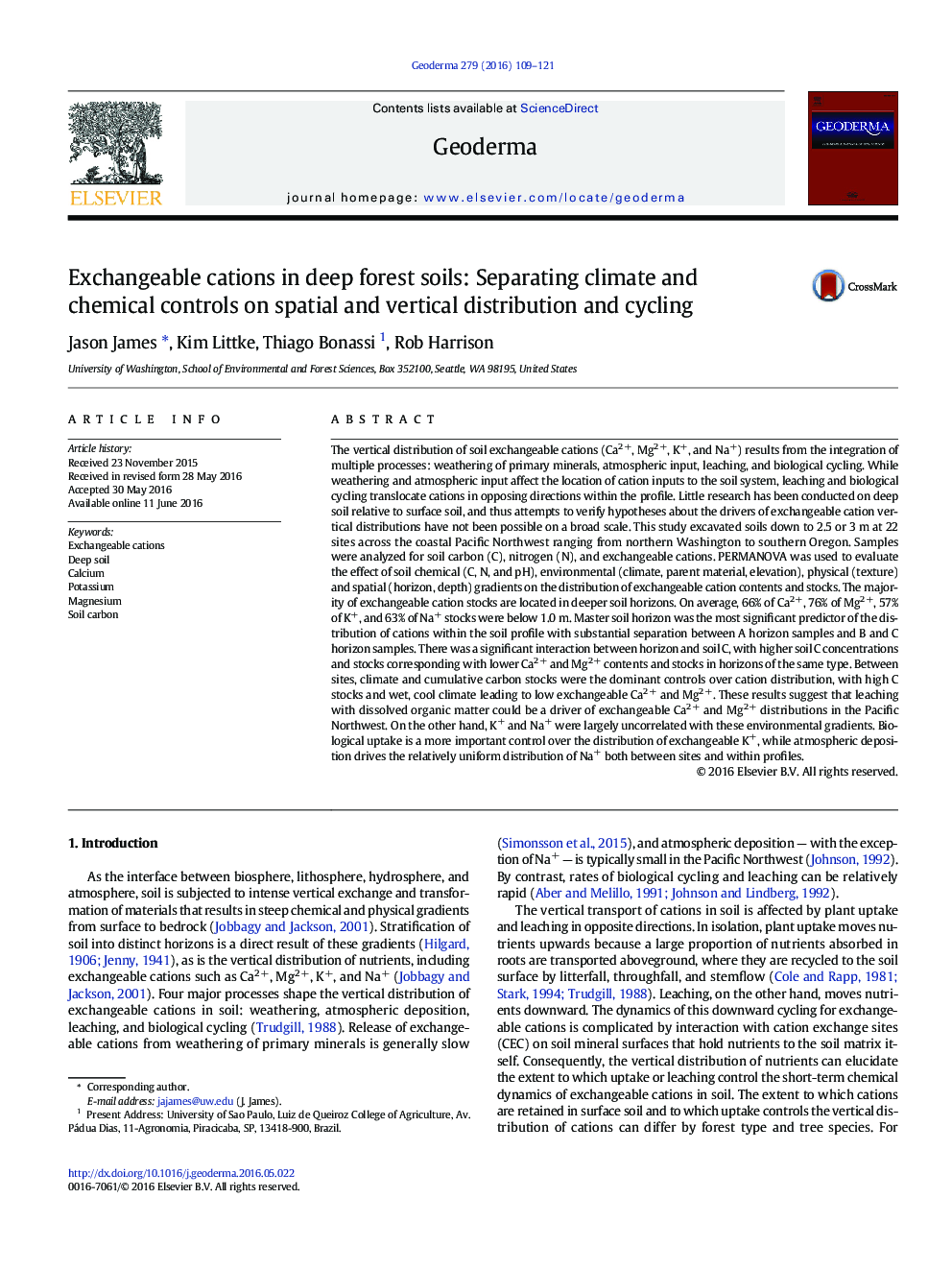| کد مقاله | کد نشریه | سال انتشار | مقاله انگلیسی | نسخه تمام متن |
|---|---|---|---|---|
| 6408318 | 1629438 | 2016 | 13 صفحه PDF | دانلود رایگان |
عنوان انگلیسی مقاله ISI
Exchangeable cations in deep forest soils: Separating climate and chemical controls on spatial and vertical distribution and cycling
ترجمه فارسی عنوان
کاتیون های قابل تعویض در خاک های عمیق جنگل: جداسازی آب و هوا و کنترل های شیمیایی در توزیع فضایی و عمودی و دوچرخه سواری
دانلود مقاله + سفارش ترجمه
دانلود مقاله ISI انگلیسی
رایگان برای ایرانیان
کلمات کلیدی
کاتدی قابل تعویض، خاک عمیق، کلسیم، پتاسیم، منیزیم، کربن خاک،
موضوعات مرتبط
مهندسی و علوم پایه
علوم زمین و سیارات
فرآیندهای سطح زمین
چکیده انگلیسی
The vertical distribution of soil exchangeable cations (Ca2Â +, Mg2Â +, K+, and Na+) results from the integration of multiple processes: weathering of primary minerals, atmospheric input, leaching, and biological cycling. While weathering and atmospheric input affect the location of cation inputs to the soil system, leaching and biological cycling translocate cations in opposing directions within the profile. Little research has been conducted on deep soil relative to surface soil, and thus attempts to verify hypotheses about the drivers of exchangeable cation vertical distributions have not been possible on a broad scale. This study excavated soils down to 2.5 or 3Â m at 22 sites across the coastal Pacific Northwest ranging from northern Washington to southern Oregon. Samples were analyzed for soil carbon (C), nitrogen (N), and exchangeable cations. PERMANOVA was used to evaluate the effect of soil chemical (C, N, and pH), environmental (climate, parent material, elevation), physical (texture) and spatial (horizon, depth) gradients on the distribution of exchangeable cation contents and stocks. The majority of exchangeable cation stocks are located in deeper soil horizons. On average, 66% of Ca2Â +, 76% of Mg2Â +, 57% of K+, and 63% of Na+ stocks were below 1.0Â m. Master soil horizon was the most significant predictor of the distribution of cations within the soil profile with substantial separation between A horizon samples and B and C horizon samples. There was a significant interaction between horizon and soil C, with higher soil C concentrations and stocks corresponding with lower Ca2Â + and Mg2Â + contents and stocks in horizons of the same type. Between sites, climate and cumulative carbon stocks were the dominant controls over cation distribution, with high C stocks and wet, cool climate leading to low exchangeable Ca2Â + and Mg2Â +. These results suggest that leaching with dissolved organic matter could be a driver of exchangeable Ca2Â + and Mg2Â + distributions in the Pacific Northwest. On the other hand, K+ and Na+ were largely uncorrelated with these environmental gradients. Biological uptake is a more important control over the distribution of exchangeable K+, while atmospheric deposition drives the relatively uniform distribution of Na+ both between sites and within profiles.
ناشر
Database: Elsevier - ScienceDirect (ساینس دایرکت)
Journal: Geoderma - Volume 279, 1 October 2016, Pages 109-121
Journal: Geoderma - Volume 279, 1 October 2016, Pages 109-121
نویسندگان
Jason James, Kim Littke, Thiago Bonassi, Rob Harrison,
